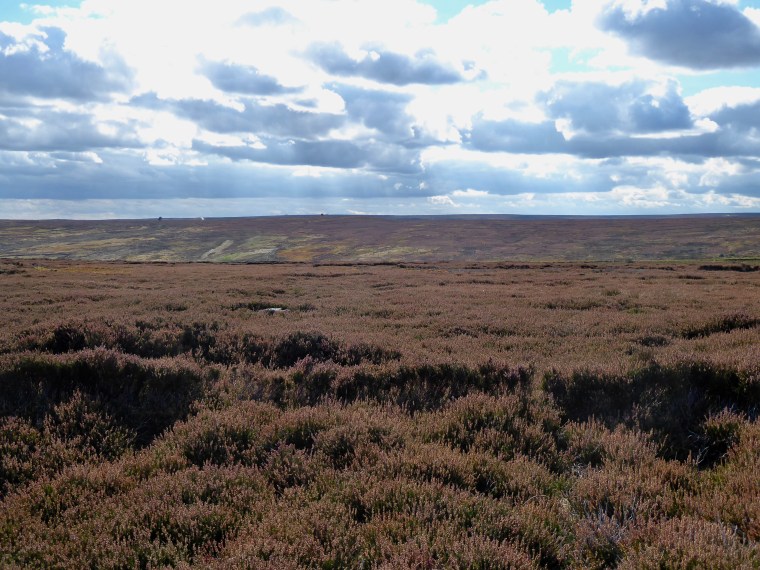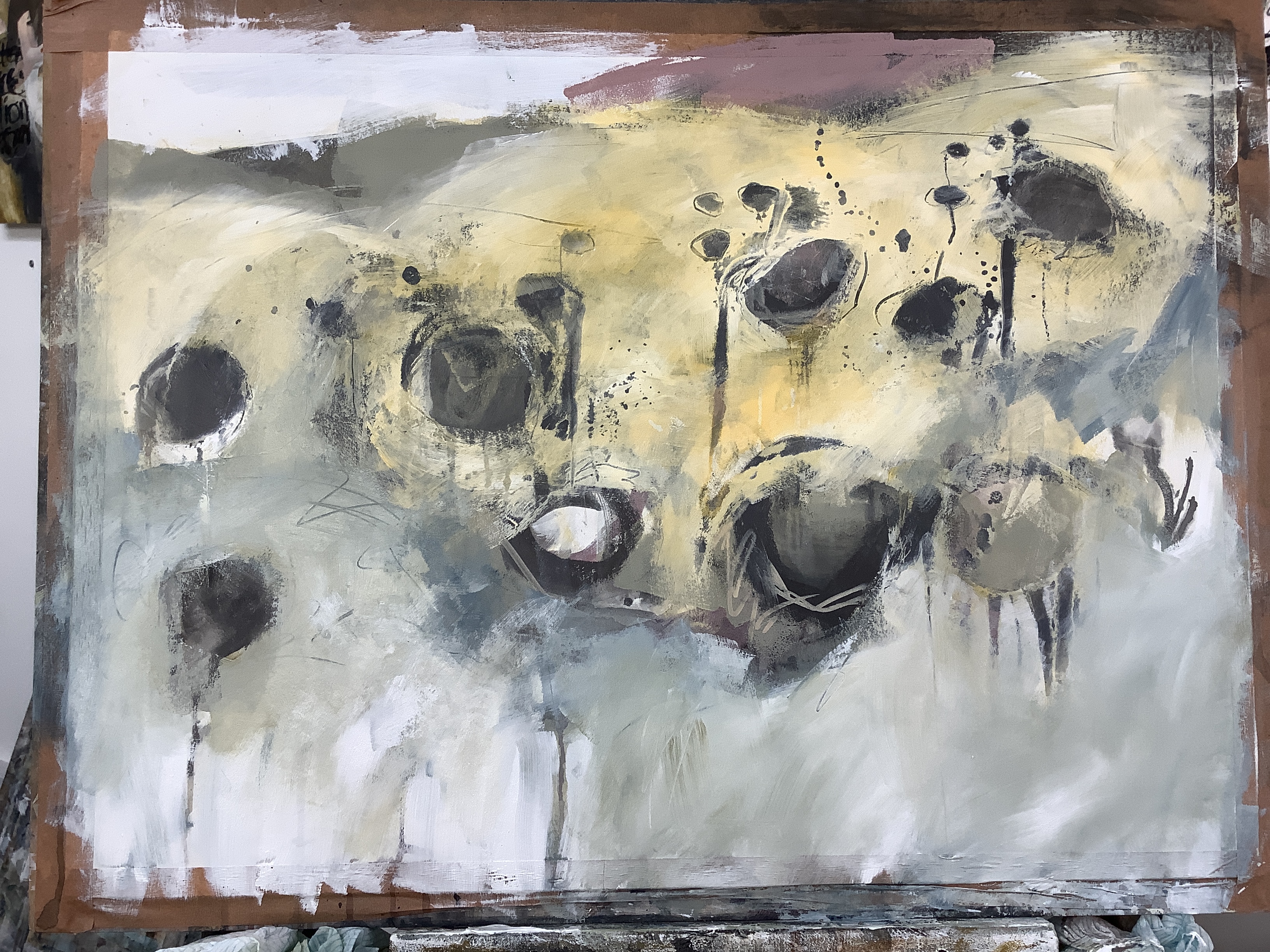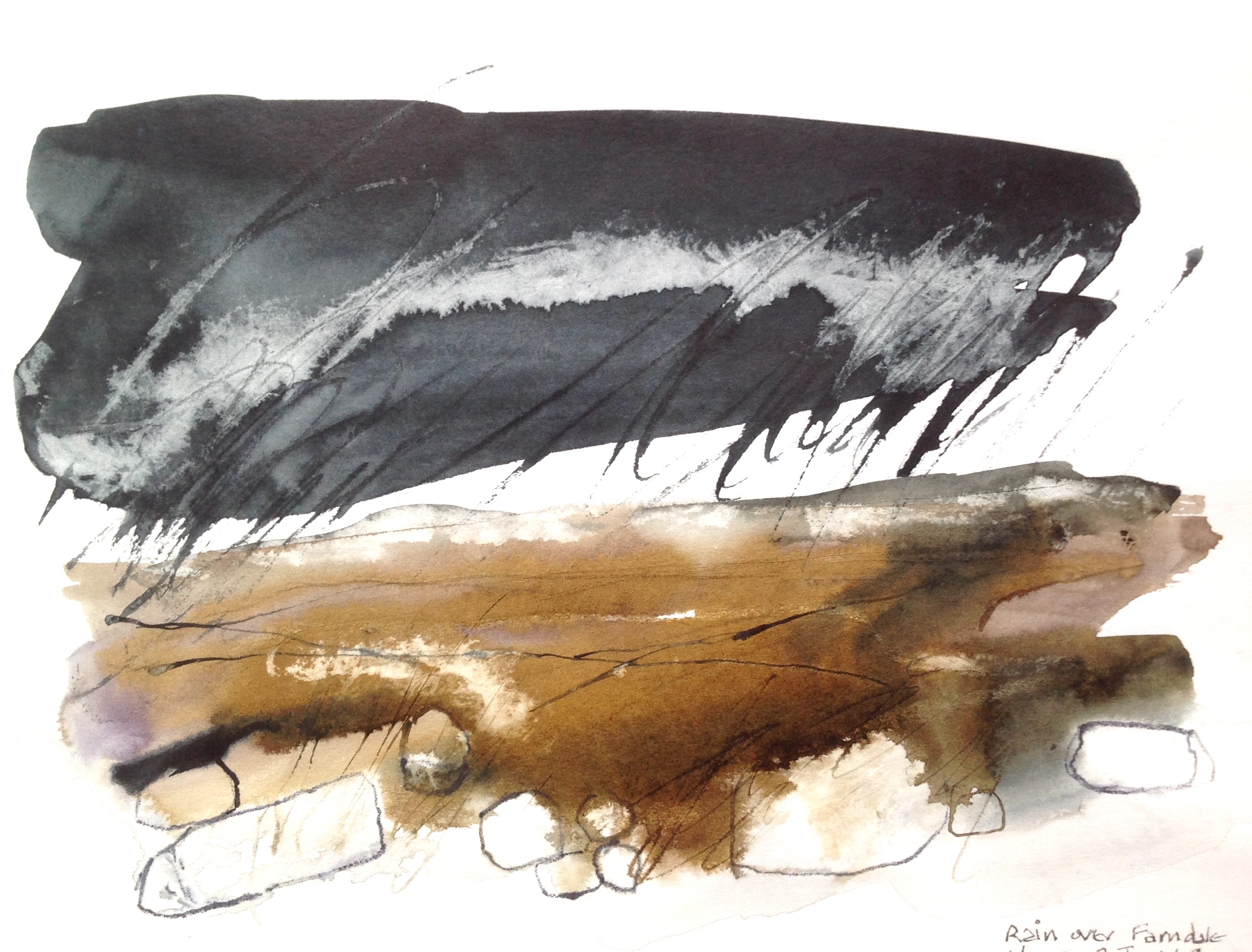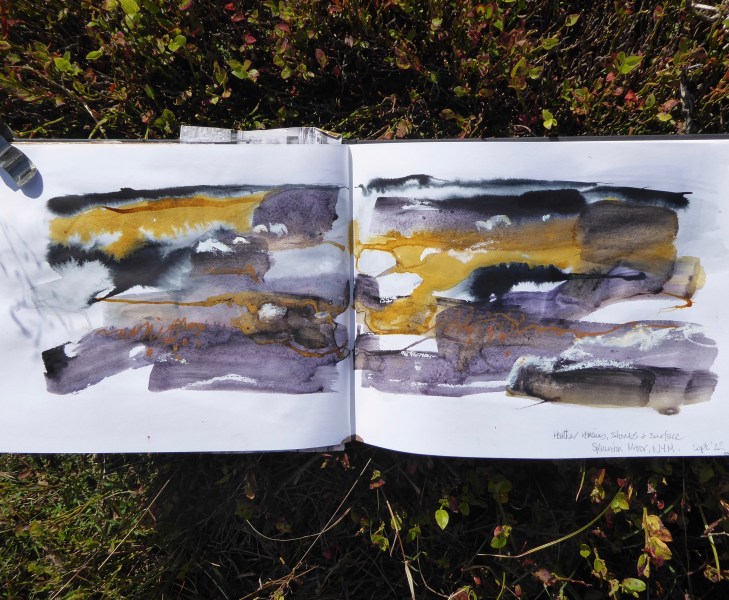
Fresh from a week away sketching in the glorious North York Moors, I’m now back in my studio working on a new series of ink/mixed media works on paper inspired by the wonderful array of textures, colours and shapes I encountered up there.

© Mari French 2022.
I was staying at Rosedale Abbey, a small village about 30 minutes drive inland from Whitby on the northeast coast. I’ve stayed there before and you can read about my experiences (and see resulting work) in this post , this post and this post.
Rosedale is a beautiful peaceful valley now, with an interesting industrial past (remains of ironworks perch above it on the steep valley sides). This time though, I wanted to concentrate on the high moorland plateau, where the heather was just going over.

© Mari French 2022.
I took mainly Liquitex acrylic inks with me as I love their intensity of colour and pigment range, and a Seawhite sketchbook as I find they will take a lot of wet media and layers without disintegrating. Not sure if I’ve mentioned it before but I used to use watercolour pans while sketching outdoors, however I was often disappointed with the resulting paler, duller colours as the paint dried.
Acrylic inks give me that depth of pigment and keep it once dry, while also having the advantage of being amenable to working over with more ink or other media. The main disadvantage of course, is the heavier weight and bulk of little glass bottles of ink in my rucksack!
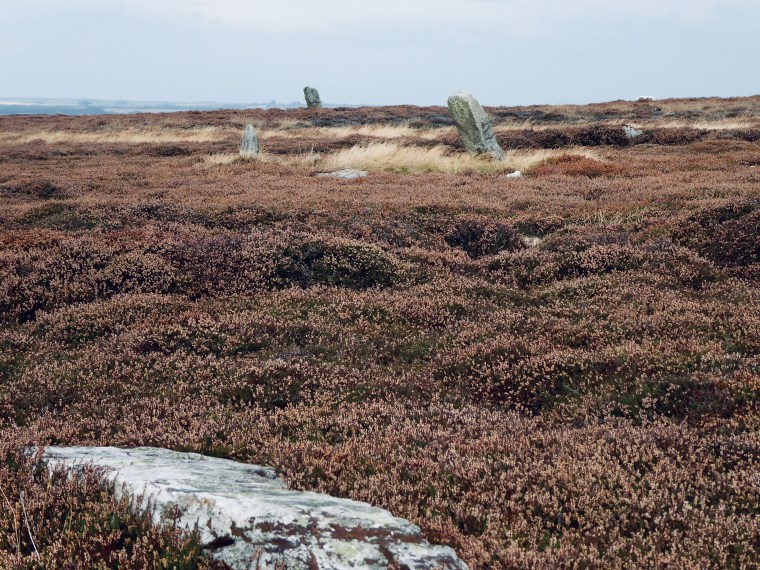

I love this landscape, particularly in the changing colours of the autumn. The North York Moors look deceptively flat in these photos but are actually a high plateau above deep fertile valleys. The whole moorland is a carpet of texture and colour, punctuated with waymarkers, rocky outcrops and standing stones. The russets and pinks of the fading heather contrast with dark rectangular areas of burnt ground. These are grouse moors and selective burning encourages the heather cover for the birds. I don’t agree with shooting for sport but the resulting patterns, textures and colours do provide interest for the abstract artist.
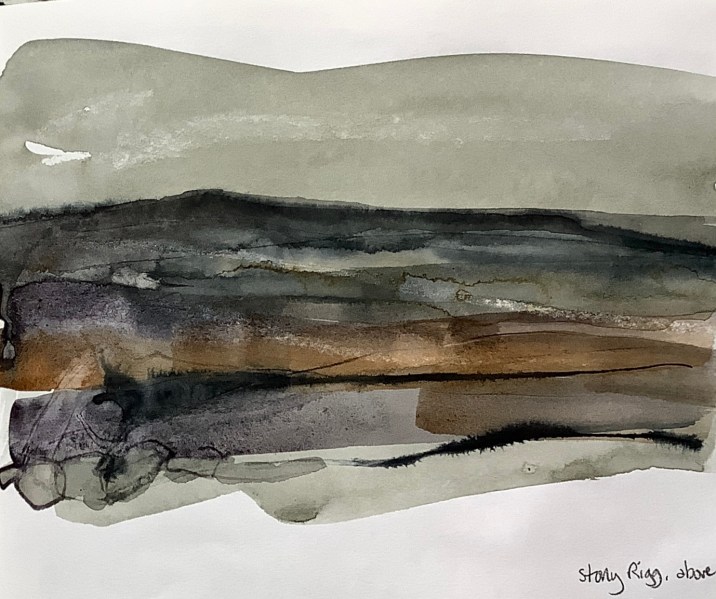
Most of the week the weather was bright and sunny, great for a holiday, but a bit undramatic for my sketching at times – I get the most inspiration from dark moody skies. So I did spend a fair amount of time chasing big cloud shadows over winding moorland roads, avoiding sheep. Fortunately there is an awful lot of scenery and heart-stopping views on these stunning moors to discover. One of my favourite landscapes and no doubt I’ll be back!

